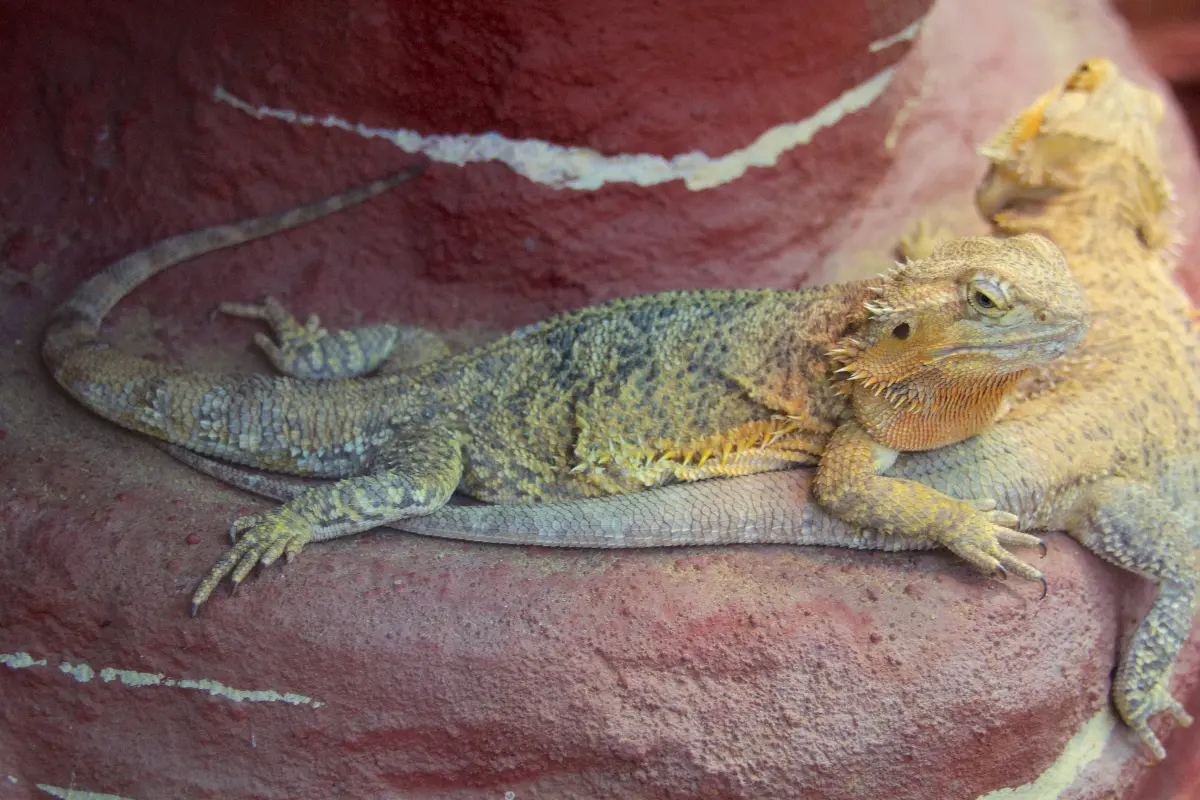Managing Bearded Dragon Allergies and Food Intolerances is a topic of immense significance that requires every bearded dragon owner’s attention.
When it comes to pet ownership, understanding health concerns and knowing how to manage them is crucial. This is particularly true for owners of exotic pets like bearded dragons.
Despite their resilience, bearded dragons can exhibit allergies and food intolerances, which if not properly managed, might lead to serious health issues.
Among the numerous concerns pet owners often have, allergies and food intolerances rank high. In this guide, we explored the best practices to diagnose and manage allergies and food intolerances in your reptilian friend.
Identifying the Bearded Dragon Allergies and Food Intolerance Signs
Becoming familiar with the various symptoms is essential in recognizing potential health issues for your bearded dragon.
Here are some key symptoms to look out for:
Skin and Scale Issues
- Red or swollen patches on the skin or scales
- Raised bumps or hives
- Excessive shedding
Behavioral Changes
- Constant scratching, rubbing, or itching
- Lethargy or lack of energy
- Agitation or irritability
Respiratory Issues
- Rapid or labored breathing
- Wheezing or coughing
- Flaring nostrils or mouth gaping
Digestive Problems
- Loose stools or diarrhea
- Vomiting or regurgitation
- Loss of appetite or weight loss
Determining the Culprits: Common Allergens and Irritants
Homing in on the specific cause of an allergy or intolerance can be challenging, but understanding a few common triggers will help you make better-informed decisions:
Dietary Triggers
- Certain insects, such as mealworms or crickets, might cause allergic reactions in some bearded dragons.
- Some fruits and vegetables, like citrus fruits, spinach, or beet tops, may cause digestive issues.
Environmental Triggers
- Substrate materials, such as sand or wood shavings, can cause irritation and allergic reactions.
- Cleaning products or chemical substances used around the enclosure might lead to an allergic response.
Analyzing and Addressing Bearded Dragon Allergies
After identifying the problem, a multi-step action plan can make a significant difference:
The Role of Veterinary Intervention
- Seek assistance from a qualified reptile veterinarian to confirm your suspicions about allergies or food intolerances.
- The vet may recommend tests, such as skin scraping or blood tests, to pinpoint the exact cause of the reaction.
- Follow the recommendations provided by the veterinarian for medications or treatment options.
Diet and Feeding
- Remove any potential dietary triggers if you suspect food intolerance and monitor your bearded dragon’s response.
- Gradually introduce alternative food sources that provide the necessary nutrition while being hypoallergenic.
- Maintain a feeding schedule to reduce stress and provide a balanced diet.
Environment and Enclosure Management
- Replace substrate materials with hypoallergenic options like reptile carpet or newspaper to minimize allergen exposure.
- Clean the enclosure regularly using pet-safe cleaning products that are free from harmful chemicals.
- Provide hiding spots, climbing branches, and a properly regulated basking area within the enclosure to enhance comfort.
Engaging in Preventative Measures
Taking proactive steps can significantly reduce the risk of encountering such health concerns:
- Conduct thorough research on bearded dragon care before adopting one as a pet.
- Periodically monitor their health by keeping a close eye on changes in appearance, behavior, and droppings.
- Implement quarantine procedures if introducing new items or animals into the bearded dragon’s environment.
In conclusion, understanding bearded dragon allergies and food intolerances is essential for conscientious pet owners. Implementing the best practices outlined in this guide can empower you to offer an optimal and healthy environment for your bearded dragon to thrive.
As long as you’re observant, proactive, and adaptive, your reptilian companion will lead a happy and healthy life.
